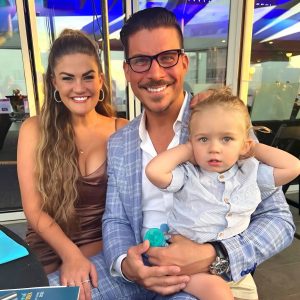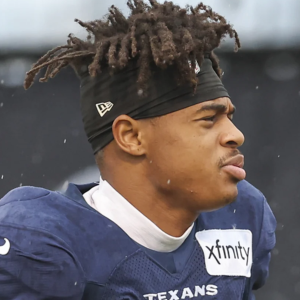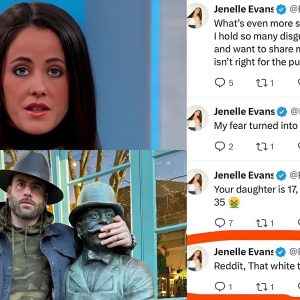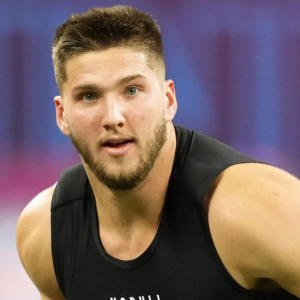Just when you think you’re done writing about Vancouver Canucks transactions for the summer, something goes down, and suddenly you’re sprung back into action.
Sprang? Springed? Sprungeth? What is the exact verb tensage we’re looking for here?
Maybe it’s Sprong?
GM Patrik Allvin and Co. broke up the summer silence at mid-day on Saturday as they announced the signing of 27-year-old right winger Daniel Sprong to a one-year, $975K AAV contract. And while those contract terms might make a casual observer question Sprong’s potential impact on the Canucks’ lineup, those who know his scoring history know there may be more there than meets the financial eye.
Sprong has scored as many as 21 goals and 46 points in a single season. Last year, he scored 18 and 43, respectively. Those numbers would have had him ranked in a tie with Dakota Joshua for sixth overall in goal-scoring and with the seventh-most points on the 2023/24 Canucks.
In other words, Sprong carries far more potential production value than does the average sub-$1 million signing.
But there is perhaps a good reason for that. The book on Sprong has always been a player who can put up surprisingly-good numbers in a depth role, but who severely struggles in his own end and is thus often not seen as capable of or trustworthy for a more dedicated deployment.
All of which raises some very natural questions about where Sprong is going to fit into the Canucks lineup, and whether there may now need to be some further trades made to accommodate a forward corps that is getting a little full.
With Sprong in the fold, Vancouver now has 15 forwards under contract who, by their contract status and playing history, are more-or-less expected to be full-time NHL forwards this year.
That includes core pieces like Elias Pettersson, JT Miller, and Brock Boeser. It includes the newly-signed Jake DeBrusk, Danton Heinen, and Kiefer Sherwood. It also includes several established veterans in the forms of Conor Garland, Dakota Joshua, Teddy Blueger, and Pius Suter.
It includes Nils Höglander, who still hasn’t found a permanent fit for himself in the lineup despite scoring 24 goals.
The forward corps also include Phil di Giuseppe, who has made the team out of training camp for several years running and has earned coach Rick Tocchet’s trust in some key roles. And then joining him on the fringe are Vasily Podkolzin and Nils Åman, each no longer exempt from waivers and penciled in for full-time employment. If one wanted, Linus Karlsson could also be lumped into this group.
And now the Canucks have added Sprong on top of all that.
It’s probably helpful at this point to split this forward corps into a more traditional hockey depth breakdown. Top-sixes and bottom-sixes aren’t nearly as stringent or static as they once were, but they still exist in at least overarching fashion, and it’s a framework that can help us sort out the abundance of Canucks forwards.
Pettersson, Miller, Boeser, and DeBrusk, for example, are all pretty certain to be skating on one of the top two lines. There’s four of six ‘top-six’ jobs accounted for right there, ostensibly leaving two more on the table.
Candidates to fill those roles include Suter and Höglander, who each had varying degrees of success on those lines last season. There’s also always the possibility that one or both of the Garland/Joshua duo are moved up into a more dedicated top-six role. Or that Podkolzin finally starts delivering on his offensive potential by working his way into that spot.
The newly-acquired Heinen is considered one of the strongest contenders to join one of either Pettersson or Miller’s wings.
So where does that leave Sprong?
One might look at that player profile and deem Sprong one of those classic ‘top-six or bust’ forwards. It’s a common trope applied to players that fans and media deem as either ‘scoring or useless.’
And, sure, Sprong does appear to primarily deliver value via scoring, and through not much else. But that doesn’t necessarily equate with him being a ‘top-six or bust’ sort of player. He’s averaged fewer than 12 minutes of ice-time throughout his entire career. Sprong is the true definition of a ‘depth scorer,’ a rare commodity who is able to put up quasi-top-six numbers without needed to be handed a real top-six deployment. It’s a phenomenon we noticed out of Höglander last year, as he seemed at times to score more when skating in the bottom-six than when he was pasted on to Pettersson’s flank.
Sprong will get a shot at some top-six minutes in camp, no doubt. But what his general history indicates is that, even if he doesn’t land one of those jobs, he can still fit into a scoring role on a lower, ostensibly ‘bottom-six’ unit.
Of course, at that point, it’s a counting game. For the purposes of figuring out the roster size, let’s imagine that Sprong did not land a coveted top-six spot in training camp. Let’s say those jobs went to vets Heinen and Suter.
Sprong would no doubt find it difficult to displace any of Joshua, Garland, or Blueger off of what becomes the presumed third line.
Which leaves Sprong competing with a real array of some very diverse skills down at the bottom-end of the Canucks lineup.
We’ve got some classic fourth line presences in Sherwood, Di Giuseppe, and Åman (the only dedicated centre of the bunch, unless Suter or Blueger end up down here.) Some still-burgeoning talents like Podkolzin and Karlsson.
And then there is Höglander who, again, profiles very similarly to Sprong as a depth-based scorer. (And if it’s Höglander in the top-six, we could then say the same things about Heinen or Suter vis-à-vis Sprong.)
It’s all starting to look pretty tight, no? That’s 15 or 16 forwards competing for what will be 13 spots (four forward lines and an extra). And that’s not even taking into consideration the possibility of Jonathan Lekkerimäki bursting onto the scene and stealing a top-six role as a rookie, or another prospect like Aatu Raty or Arshdeep Bains or Max Sasson winning a depth job with a strong training camp performance.
All of which can draw us to two possible conclusions.
The first is that the Canucks are intentionally loading up for a competitive camp, in which no one’s spot is particularly safe, and everything is up for grabs. Under this scenario, we can expect some controversial and perhaps painful cuts.
To some extent, this seems inevitable, even with further trading. That list of 16-and-change is going to have to get whittled down somehow.
Does Di Giuseppe’s run of success meet its end? Does Podkolzin fail to make the team yet again? Does Sprong himself flame out on attempts to impress the coaching staff, and wind up on another team via waivers or starting down in Abbotsford?
All seem possible. And, to an extent, all seem perfectly acceptable. The Canucks aim to contend in 2024/25. That should start with a contentious training camp, and there’s nothing wrong with setting a high bar for inclusion on the club roster – and in cutting those players who fall short. Having too many NHL-capable players is, in general, a good problem to have, so long as a team doesn’t lose too much of its depth through the waiver process.
But a further trade is still very much a possibility. With the forwards stocked up so thoroughly, we’d expect any subsequent transaction to either involve the flipping of a forward for future assets – think picks and prospects – or in exchange for a defender, preferably of the puck-moving variety.
Certain depth pieces we’ve already mentioned would undoubtedly hold some trade value. Podkolzin, for example, was once a 10th overall selection in the draft. His development has waxed and waned since then, but there’s still got to be some untapped potential hidden within, or at least what an NHL GM could convince themselves was untapped potential hidden within. Maybe the Canucks look to sell off Podkolzin now and recoup a pick rather than risk someone snagging him on waivers.
But the name we should really be thinking most about in conjunction with the Sprong signing is Höglander. As we said, the two profile very similarly as players who can score in a depth role, but who have perhaps not developed the full array of two-way capabilities that would allow their coaches to trust them with more minutes.
We imagine both players will get a shot at top-six jobs in training camp. Either could win one, with Höglander probably having the edge on youth and established chemistry. But if neither lands one, are we really able to conceive of a Tocchet bottom-six that contains both Höglander and Sprong? It seems both a tad redundant and a recipe to make Tocchet’s head explode.
There’s probably room for one mercurial scorer who needs to be supported by more defensively-apt players on a Rick Tocchet energy line. There’s probably not room for two.
All of which leads to some very direct and genuine wondering. The Canucks have, perhaps, an opportunity to sell high on Höglander after that 24-goal campaign. They’ve got a clear-cut need for another puck-moving defender in their lineup. And they’ve just signed what looks like a fine Höglander replacement for the forward corps in the form of Daniel Sprong.
Is this all setup for a Höglander-for-PMD trade?
Or is it just the preamble for an ultra-competitive training camp that culminates in some difficult cuts?
The answers, of course, lie hidden in Chef Allvin’s private kitchen, and will only be unveiled as the multi-course meal that is the 2024 offseason continues.





